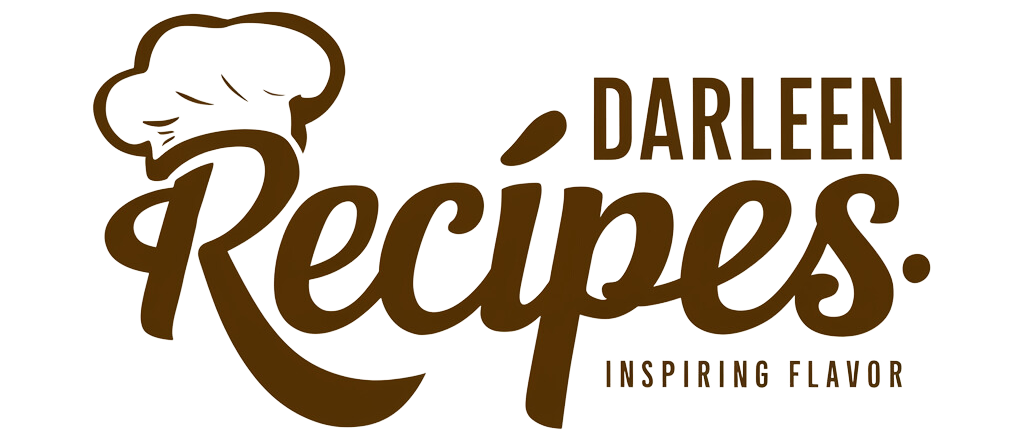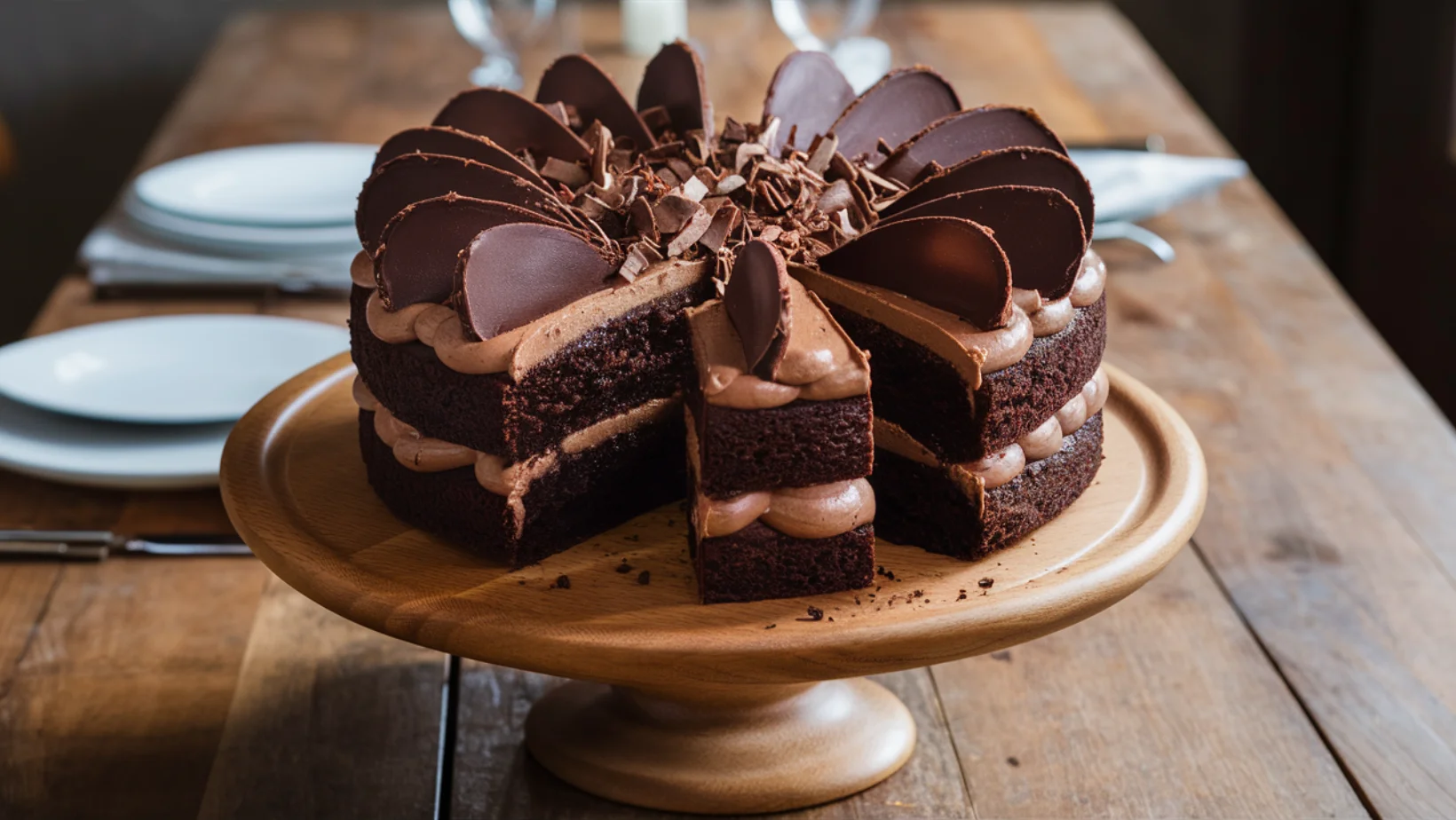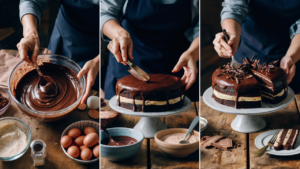Introduction
Ah, the luxurious taste of Swiss chocolate cake, where velvety chocolate ganache meets the perfect crumb. This Swiss chocolate cake recipe leads you through a step-by-step guide, ensuring your cake will be irresistibly moist and decadent. By blending quality ingredients with easy-to-follow steps, you’ll create a cake that’s destined to impress.
Introduction to Swiss Chocolate Cake
Overview of Swiss Chocolate Cakes
Swiss chocolate cakes are adored for their rich, smooth chocolate flavor and impeccable texture. They’re unique because Swiss chocolate itself has a distinct taste, crafted from the finest cocoa butter and sourced ingredients. Its luscious profile is unparalleled, making it a worldwide favorite.
Importance of High-Quality Swiss Chocolate
The secret to a perfect Swiss chocolate cake recipe lies in using premium Swiss chocolate. Its quality directly influences the cake’s flavor and overall decadence. Whether you’re baking for a special occasion or satisfying a craving, the distinct richness will elevate your dessert to new heights.
Popularity of Swiss Chocolate Cake
From cozy home kitchens to upscale patisseries, this cake’s allure spans across continents. Its melt-in-your-mouth taste, combined with a flawless appearance, makes it a dessert that everyone loves.
Key Ingredients
Primary Components of Swiss Chocolate Cake
To create a memorable Swiss chocolate cake, you’ll need a few primary components to form the base:
- Eggs: They provide structure and moisture, creating a light yet rich crumb.
- Granulated Sugar: Sweetness is crucial, but sugar also helps retain moisture and balance the bitterness of the cocoa.
- Cake Flour: For a delicate, tender cake, cake flour delivers a soft texture that’s difficult to replicate with other types.
- Cocoa Powder: Unsweetened cocoa powder adds that quintessential deep chocolate flavor, ensuring every bite is a delight.
- Baking Powder: Baking powder ensures the cake rises evenly, providing the right amount of fluffiness and a consistent structure.
- Buttermilk: This adds tanginess and acidity, enhancing the chocolate flavor while contributing moisture to the cake.
- Vanilla Extract: Vanilla subtly enhances the overall flavor, giving a rounded finish.
Role of Swiss Chocolate
Swiss chocolate deserves a spotlight all its own. Known for its smooth, creamy texture due to high-quality cocoa butter, it melts beautifully into the cake mixture. Whether you’re using it as melted chocolate for the batter or for the ganache, its flavor complexity will ensure your cake stands out from other chocolate desserts.
Frosting and Filling Ingredients
What’s a Swiss chocolate cake without decadent frosting and filling? Here’s what you’ll need:
- Heavy Cream: For a rich, velvety ganache that coats the cake perfectly.
- Milk Chocolate: Adds a softer, sweeter touch to the buttercream frosting, complementing the intense ganache.
- Butter: Unsalted butter provides the essential base for creamy, spreadable frosting.
- Powdered Sugar: Sifted sugar gives the frosting its signature sweetness and airy texture.
- Pinch of Salt: Helps balance the flavors and cuts through the sweetness, offering a more complex taste.
Pro Tip: Use a high-quality Swiss chocolate brand to guarantee a consistent and luxurious flavor in every layer of your cake.
Tools and Preparation
Essential Kitchen Tools
Before embarking on your journey to bake the perfect Swiss chocolate cake, gather these essential kitchen tools to ensure smooth sailing:
- Baking Pans: Opt for three 8-inch round pans for uniform layers.
- Parchment Paper: Line the pans to prevent sticking, ensuring clean removal.
- Electric Mixer: A stand or hand mixer makes blending ingredients a breeze.
- Spatula and Offset Spatula: For spreading frosting evenly across each layer.
- Wire Rack: Allow cakes to cool properly on a wire rack for even airflow.
- Measuring Cups and Spoons: Precise measurements are critical to baking success.
Preparation Guidelines
A well-prepared kitchen is the foundation of successful baking. Here’s how to prep:
- Preheat the Oven: Start by preheating your oven to 350°F (175°C) so it’s ready for the batter.
- Line and Grease the Pans: Grease your baking pans thoroughly with butter or non-stick spray, and line with parchment paper for seamless removal.
- Measure Ingredients Accurately: Use measuring cups and spoons to measure out ingredients precisely, especially flour and cocoa powder, which can be easy to over- or under-measure.
- Sift Dry Ingredients: Sift flour, cocoa powder, baking soda, and baking powder to prevent lumps, creating a smooth batter.
- Melt Chocolate: If your recipe calls for melted chocolate, do so carefully in a double boiler or microwave to avoid burning. Stir until smooth.
- Prepare Your Workspace: Clear the counters and arrange all necessary tools and ingredients for easy access during the mixing process.
Recipe Steps
Making the Cake Base
- Mixing the Dry Ingredients: In a large mixing bowl, sift together flour, cocoa powder, baking soda, baking powder, and a pinch of salt. Whisk until well combined.
- Combining the Wet Ingredients: In another bowl, beat the eggs and sugar until fluffy. Add buttermilk, vegetable oil, and vanilla extract, mixing until well blended.
- Incorporating Chocolate: Melt your Swiss chocolate until smooth, then add to the wet mixture with a dash of espresso powder for depth. Stir until fully incorporated.
- Blending Wet and Dry Ingredients: Gradually add the dry ingredients to the wet mixture. Mix gently until just combined, careful not to overmix, to maintain a tender crumb.
- Pour and Bake: Divide the batter evenly between the lined pans. Bake at 350°F (175°C) for 30-35 minutes or until a toothpick comes out clean. Let the cakes cool in the pans for 10 minutes before transferring to a wire rack to cool completely.
Preparing the Ganache
- Heating the Cream: In a small saucepan, warm heavy cream over medium heat until it begins to simmer. Remove from heat just before boiling.
- Melting the Chocolate: Place finely chopped Swiss chocolate in a bowl. Pour the hot cream over the chocolate, cover, and let sit for 5 minutes.
- Stirring to Perfection: Remove the cover and stir the mixture until it’s smooth and glossy. Let the ganache cool until it reaches the desired consistency for frosting.
Making the Milk Chocolate Buttercream
- Creaming the Butter: Beat unsalted butter in a stand mixer until light and fluffy. Add powdered sugar, vanilla, and a pinch of salt, mixing until well incorporated.
- Adding Melted Chocolate: Gently fold melted milk chocolate into the butter mixture. Continue beating for about 2 minutes until the frosting is creamy and fluffy.
Assembling the Cake
- Layering the Cake: Place one cake layer on a serving plate. Spread half the buttercream evenly on top with an offset spatula.
- Adding the Second Layer: Place the second cake layer on top and spread the remaining buttercream.
- Final Layer and Ganache: Top with the final cake layer and coat the entire cake with a generous layer of chocolate ganache.
- Decorating: Finish with chocolate shavings or pieces of Swiss chocolate for a beautiful presentation.
Tips and Variations
Baking Tips for Success
- Don’t Overmix: Overmixing the batter can lead to a denser cake. Mix just until the dry ingredients are incorporated into the wet.
- Cooling is Crucial: Allow the cake layers to cool completely on a wire rack before frosting. Otherwise, the frosting may melt, leading to a messy assembly.
- Use Parchment Paper: This helps ensure a clean removal from the pan, preventing the layers from sticking and breaking.
- Store Properly: Cover leftover cake tightly and store in an airtight container at room temperature for up to three days, or refrigerate for up to five days.
Variations on the Swiss Chocolate Cake Recipe
- Fruit Fillings: Add a layer of raspberry jam or a mix of berries between the cake layers for a fruity twist that contrasts beautifully with the rich chocolate.
- Nuts or Crunch: Incorporate crushed hazelnuts, almonds, or even crispy rice into the frosting or ganache for a textural surprise.
- Flavor Profiles: Infuse the ganache with a hint of mint extract or orange zest for a refreshing flavor boost. A splash of vanilla or almond extract can also add more depth.
- Decorations: Sprinkle chocolate shavings or cocoa powder over the top, or place whole berries or edible flowers for an elegant finish.
With these tips and variations, you can put your personal spin on this decadent Swiss chocolate cake recipe and surprise your guests with every delicious bite.
Pairing Ideas for Swiss Chocolate Cake
Beverage Pairings
- Coffee: The robust flavors of coffee complement the rich chocolate, enhancing the taste with its slightly bitter notes. A dark roast or espresso pairs beautifully.
- Tea: Earl Grey’s floral notes or a strong black tea offer a refined contrast to the cake’s sweetness. Peppermint or spiced chai teas also work well.
- Hot Chocolate: Amplify the chocolate flavors by pairing your Swiss chocolate cake with a decadent hot chocolate made from the same Swiss chocolate.
Ice Cream Pairings
- Vanilla Ice Cream: Classic vanilla cuts through the richness of the cake, providing a simple yet refreshing complement.
- Raspberry Sorbet: The tartness of raspberry sorbet brightens the cake’s intense chocolate flavors, giving each bite a delightful zing.
- Mint Chocolate Chip: A cooling mint flavor paired with chocolate chips enhances the cake’s flavor profile while offering a refreshing taste.
Fruit Pairings
- Berries: Fresh strawberries, raspberries, or blueberries add a touch of acidity and vibrant color to the dessert.
- Citrus: A zest of orange or lemon can balance out the sweetness and provide an aromatic twist.
- Cherries: Rich in flavor, cherries bring out the natural notes of the chocolate and add a juicy texture.
These pairing ideas can elevate the Swiss chocolate cake recipe, offering delightful contrasts and harmonies that make each slice even more enjoyable!
FAQs Section
What is the Difference Between Swiss Chocolate and Other Chocolate?
Swiss chocolate stands out for its exceptionally smooth texture and mild, creamy flavor, owing to its high cocoa butter content and meticulous manufacturing process. The use of premium-quality milk and carefully sourced cocoa beans also adds to its distinctive taste.
What is Swiss Chocolate Cake Made Of?
A Swiss chocolate cake primarily includes rich Swiss chocolate, eggs, sugar, flour, cocoa powder, baking powder, and buttermilk. The frosting typically uses ganache, buttercream, or whipped cream, often enhanced with milk or dark Swiss chocolate.
Can I Substitute Other Types of Chocolate?
Yes, but bear in mind that substitutions may alter the cake’s flavor profile. If you can’t find Swiss chocolate, opt for a high-quality alternative like Belgian or French chocolate. Just remember, the taste won’t be identical.
What is the Best Substitute for Swiss Chocolate Cake Mix?
If you can’t find a Swiss chocolate cake mix, try using a high-quality chocolate cake mix with extra cocoa powder. Alternatively, add melted Swiss chocolate to any regular chocolate cake batter to give it the distinctive flavor.
Can I Make Swiss Chocolate Cake Without Eggs?
Certainly! There are several substitutes for eggs, such as applesauce or a flaxseed “egg” (1 tablespoon ground flaxseed mixed with 3 tablespoons water). However, these changes may affect the cake’s rise and overall texture. You can experiment until you find a substitute that works best for your Swiss chocolate cake recipe.
Why Does German Chocolate Cake Taste Different?
The sweetened German baking chocolate lends a mild and slightly sweeter flavor compared to regular unsweetened chocolate. Additionally, the coconut-pecan frosting contributes a nutty and caramel-like taste, differentiating it from other chocolate cakes.
What is the Difference Between Chocolate and German Chocolate Cake?
A traditional chocolate cake typically uses unsweetened cocoa or chocolate, while German chocolate cake features a specific brand of sweet baking chocolate. The German chocolate cake also has a signature coconut-pecan frosting, giving it a unique texture and flavor.
Is Coffee Necessary in the Recipe?
While coffee isn’t required, adding a bit of espresso powder or strong brewed coffee intensifies the chocolate flavor, making it richer and more robust. The coffee flavor isn’t directly noticeable but instead enhances the overall depth.
Conclusion
Creating the ultimate Swiss chocolate cake is all about choosing premium ingredients, carefully following preparation steps, and assembling with precision. By selecting high-quality Swiss chocolate, mixing the batter properly, and layering with luscious ganache and buttercream frosting, you can achieve a cake that’s truly indulgent.
Whether you’re serving it at a celebration or enjoying a slice with coffee on a quiet afternoon, the perfect balance of rich chocolate flavor and tender crumb makes this dessert an irresistible crowd-pleaser. Experiment with different fillings, decorations, and flavors to put your personal touch on the recipe. Don’t forget to explore other chocolate cakes like German chocolate cake for a unique twist, or try adding fruit fillings for extra flair.
Ultimately, this Swiss chocolate cake recipe guarantees a mouthwatering dessert that’s bound to satisfy any chocolate lover. So, roll up your sleeves, gather your ingredients, and whip up this incredible treat to share with loved ones or savor on your own!


